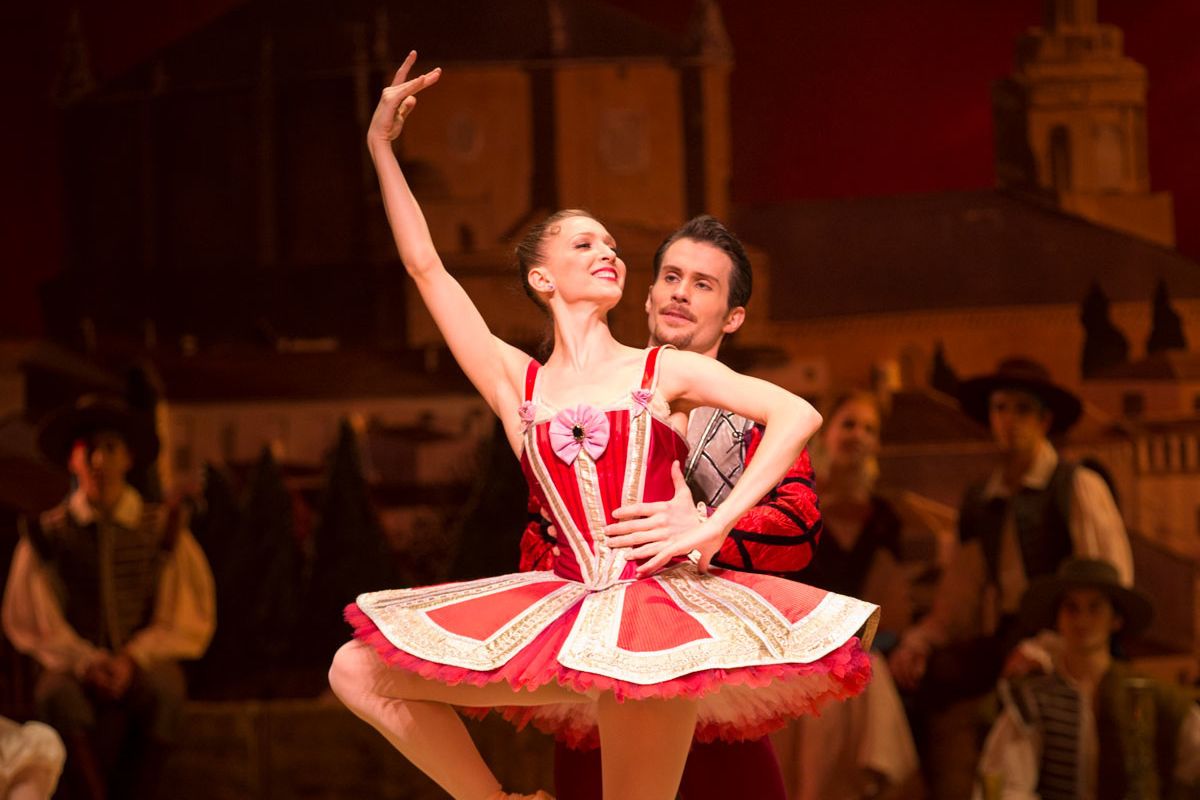The Secrets to Smooth—and Smack-Free—Partnered Pirouettes
Updated 9/26/22.
In theory, partnered pirouettes should be easier than regular pirouettes, right? After all, there are not one, but two of you there to make lots of smooth, glorious rotations happen. But in practice, they can be…complicated. (Just ask Kristi Capps, ballet master at Kansas City Ballet, who once broke her ring finger on her partner’s chest during a whip turn.)
Thankfully, partnered pirouettes can be exciting—and injury-free—if you and your partner work together to coordinate your timing and spacing. Here are a few simple rules to help you and your partner find common ground.
Advice for Women
Ladies should start by maintaining a strong supporting leg and a square passé position. “When I was younger, I tried to do too much, and my high passé caused problems with the pirouette,” says Yuka Oba of Grand Rapids Ballet. “Don’t get greedy and let your hip get too high.” She recommends that girls engage their abdominals and backs from the beginning of class, so they don’t have to think about it later. This strength and stability will help the guy keep you on your leg.
Take a good preparation, and do a smooth, consistent relevé each time—don’t jump up to pointe, which can throw you off balance. To finish the pirouette gracefully, Oba will sometimes relax her spot a bit in the final rotations, so that her partner knows she’s ready to stop. “When the girl tries to keep going but the partner stops her, it can be an ‘ugh’ moment,” she says.
What can you do to prevent collisions? Move quickly. Get to passé as fast as you can, which will help your partner judge the correct distance and avoid getting hit by your arms or knee. And when your arms need to go to high fifth, they should get there right away. If it’s an adagio pirouette and you want to bring your arms up slowly, make sure to cross them, to keep them away from your partner’s face.

PNB’s Murphy and Orza in Don Quixote (photo by Angela Sterling, courtesy PNB)
Advice for Men
If you’re new to partnering, practice some balancing exercises with your partner first, so you can feel where her center is. Start with the girl standing in passé on pointe, and lean her forward, back, and side to side to find her balance point—because its location might surprise you. “It’s not going to be straight down the middle of her back,” says Seth Orza, former principal at Pacific Northwest Ballet. “It’ll be over her standing leg.”
At the beginning of a partnered pirouette, some women like to feel a “snap” from their partner’s hands to get into the turn, while others don’t want any help. Talk to your partner to see what she prefers. Either way, “you have to react quickly,” Orza says. “If you feel that she’s off-balance, have your hands right there ready to correct it.”
Yes, you want your partner to feel safe and supported, but try not to crowd her. “You should really be at least an arm’s distance away,” Orza says. That’ll allow you to complete the woman’s line in a more beautiful way, and also make collisions less likely. And Capps warns against partnering the girl on her ribs. “It’s so uncomfortable if the boy has his hands too high,” she says. “He should keep his hands down by her hips.”
Avoid the Paddle
It’s possible to achieve impressive pirouette feats with the support of a partner. But when the boy starts paddling the girl around to eke out more turns, it can cause obvious and uneven rotations. “It may be fun for the dancers, but it’s not technique,” Capps says.
If you and your partner are going for a showstopping number of pirouettes, the girl should spot quickly and come up to relevé with enough force to complete the rotations naturally. “When we get to five or six turns, that’s when the guy can help slightly,” Orza says. “But it shouldn’t look like you and your partner are working too hard.”





